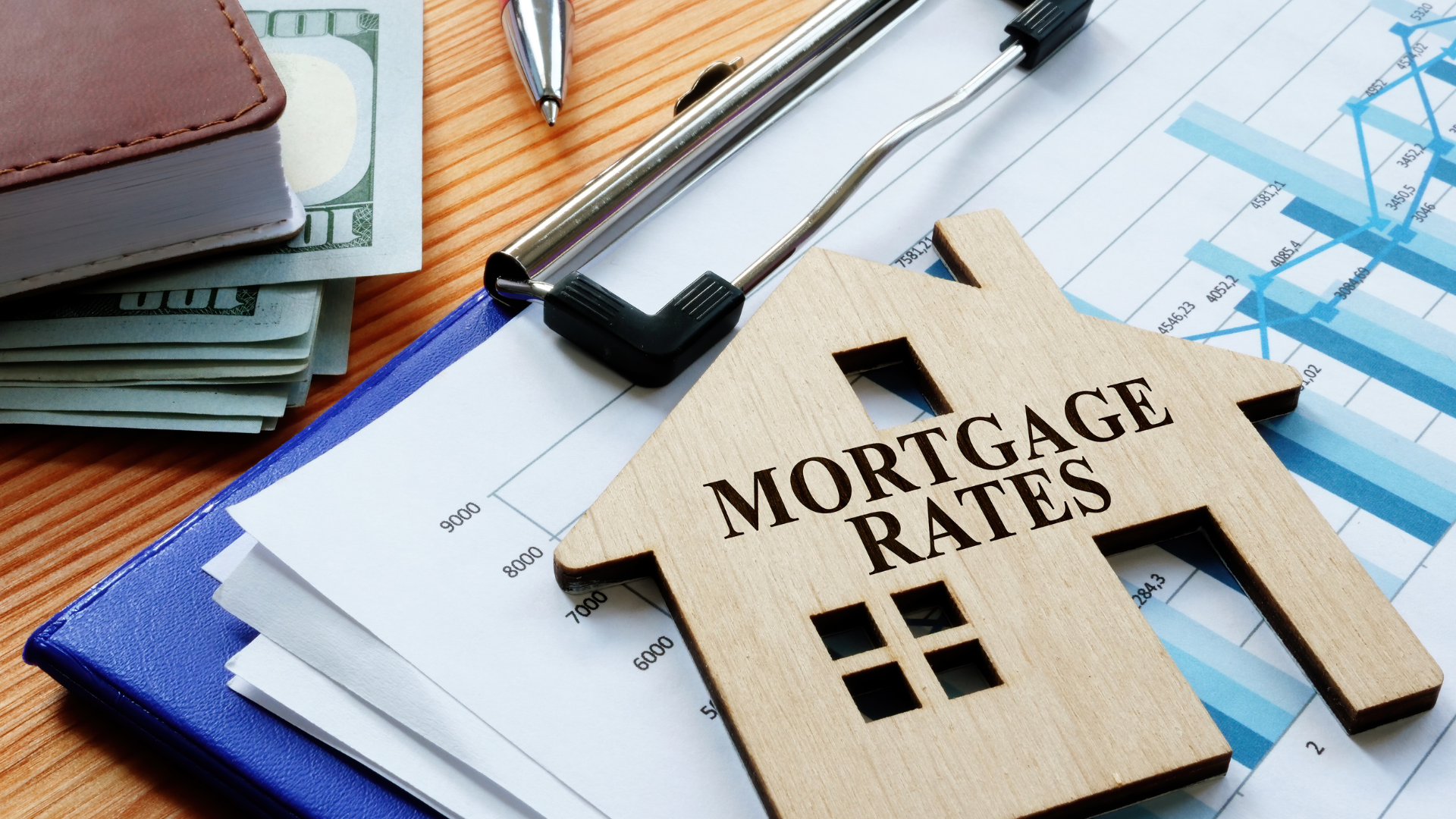Part and Part Mortgages Explained: Is It Right For You?

In 2022, the number of part and part mortgages in the UK fell by 11.9% from the previous year, reaching 222,000.
While this shows a decline, part and part mortgages still offer lower monthly payments and more flexibility. If you want to own a home but need more affordable monthly payments, this type of mortgage might be a good option.
This guide will help you understand part and part mortgages in the UK and how to get one.
What Are Part and Part Mortgages?
A part and part mortgage lets you pay off some of the loan while only covering the interest on the rest. Think of it as a mix of both repayment and interest-only mortgages.
This way, your monthly payments are lower than a full repayment mortgage, but you’ll still have a balance to pay off at the end of the term.
While it sounds like a good deal, you need a plan for that final lump sum. Without one, it could turn into a financial problem instead of a convenient option.
How Do They Work?
Let’s explain it with an example.
Suppose you have a £200,000 mortgage. You could set £150,000 on a repayment basis and £50,000 on interest-only.
Here’s how the monthly payments would work:
- Repayment Part: For the £150,000 repayment portion, with an interest rate of 5% over 25 years, you’d be paying around £877 per month.
- Interest-Only Part: For the £50,000 interest-only portion, at the same 5% interest rate, you’d pay just the interest, which would be about £208 per month.
Total Monthly Payment for Part and Part Mortgage: £1,085 per month.
- Compared to a Full Repayment Mortgage: A full repayment mortgage for £200,000 at 5% would cost you about £1,169 per month. So, the part and part mortgage is lower.
- Compared to an Interest-Only Mortgage: An interest-only mortgage for £200,000 at 5% would be £833 per month, which means the part and part mortgage is higher.
The part and part mortgage gives you more manageable monthly payments compared to a full repayment mortgage but leaves you with a smaller amount to pay off at the end, unlike a full interest-only mortgage.
Remember, you’ll still need a plan to clear that remaining balance when the mortgage term ends, so think ahead.
Who Can Qualify?
Wondering if you fit the bill for a part and part mortgage? These mortgages aren’t handed out like sweets—they’re a bit more specialised. To qualify, lenders typically look at a few things:
- Your Deposit. A decent deposit is key. Generally, you’re looking at a maximum loan-to-value (LTV) ratio of around 75% to 85%. The more deposits you have, the better.
- Income and Affordability. Lenders need to see that you can comfortably afford your monthly payments. So, your income and outgoings will be under the microscope.
- Repayment Plan. You must have a credible plan to pay off the interest-only portion. This could be through investments, pension cash, or even selling up and downsizing.
- Credit History. Like with most financial products, your credit score needs to be solid. Lenders want to be sure you’re reliable.
- Age and Employment. Whether you’re employed, self-employed, or approaching retirement, there’s a part and part mortgage for you. There are even options for the over-50s, with some lenders tailoring products specifically for older borrowers.
How To Get Part and Part Mortgages?
Getting a part and part mortgage is similar to getting any other mortgage, but there are a few extra steps:
- Gather Your Documents. Lenders will need to see proof of income, spending, and details about your repayment plan for the interest-only portion. Make sure you have everything in order.
- Talk to a Broker. A mortgage broker can match you with the right lender and product for your situation. They know who’s more likely to approve your application and can negotiate better terms for you.
- Submit Your Application. Once you’ve found the right lender and you’re happy with the terms, it’s time to apply. Your broker will help ensure everything is in place, and you’re on your way to securing your part and part mortgage.
Get in touch with us to get started with your application. We’ll connect you with a qualified mortgage broker who can help you find the right mortgage deal that fits your finances.
The Pros and Cons of Part and Part Mortgages
Every mortgage has its highs and lows, and a part and part mortgage is no exception. Let’s break down the pros and cons.
Pros
- Lower Monthly Payments. Because part of the mortgage is interest-only, your monthly payments are lower compared to a full repayment mortgage.
- Flexible Structure. You can adjust the mix between repayment and interest-only portions to suit your financial situation, giving you control over your monthly payments.
- Reduced Interest Costs Compared to Interest-Only Mortgages. You’ll pay less interest overall compared to a full interest-only mortgage, as some of your loan is repaid monthly.
- Option to Switch. If your financial situation improves, you can switch to a full repayment mortgage, reducing your future liabilities.
- Useful for Future Plans. This type of mortgage is ideal if you plan to downsize, receive an inheritance, or expect a lump sum to clear the remaining balance.
Cons
- Lump Sum at the End. You’ll need a clear plan to pay off the remaining interest-only balance when your term ends.
- Early Repayment Charges. You could face fees if you decide to repay your mortgage early.
- Higher Interest Costs than Full Repayment. You may pay more in total interest compared to a full repayment mortgage.
- Longer to Pay Off. It generally takes longer to clear your mortgage because only part of your loan is being repaid each month.
- Strict Eligibility Criteria. Qualifying can be challenging due to the need for a repayment plan and a strong financial profile.
How To Pay Off The Remaining Loan?
Paying off the remaining balance on a part and part mortgage is crucial when your term ends. Here are some options to consider:
- Savings or Investments. Use any savings or investments to clear the outstanding amount. Planning ahead can make this easier.
- Pension Lump Sum. If you’re nearing retirement, consider using a lump sum from your pension. This is often a tax-efficient way to pay off the debt.
- Remortgaging. You could switch to a full repayment mortgage to cover the remaining balance. This depends on affordability and lender approval.
- Selling Your Property. If you’re planning to downsize, selling your home can help pay off the mortgage and possibly leave you with some extra cash.
- Equity Release. For those aged 55 and over, equity release can provide funds to pay off the mortgage without needing to sell or move.
- Inheritance or Windfall. If you expect an inheritance or windfall, this can be used to clear the balance.
- Switching to Interest-Only. You could convert the remaining repayment portion to interest-only, but this requires lender approval and careful consideration.
Having a clear plan is essential to avoid any financial surprises at the end of your mortgage term.
If you’re unsure which option is best, speaking with a qualified mortgage broker can help you make the right choice.
Where To Get Part and Part Mortgages?
Part and part mortgages aren’t as common as other types, so you won’t find them on every high street corner. But don’t worry; there are plenty of lenders who can help:
- High Street Lenders: Names like Halifax, Barclays, and Leeds Building Society offer part and part mortgages. They’re a solid starting point if you’re looking for a well-known lender.
- Specialist Lenders: For more tailored options, consider going through a whole-of-market mortgage broker. They have access to a wider range of products, including those from specialist lenders who are more flexible with criteria.
Key Takeaways
- A part and part mortgage combines repayment and interest-only payments, lowering your monthly costs but leaving a balance to pay off at the end.
- Your total monthly payment is lower than a full repayment mortgage but higher than an interest-only mortgage.
- You’ll need a good deposit, stable income, a repayment plan, and a strong credit score to qualify.
- Options for paying the final balance include savings, pension lump sum, remortgaging, selling your property, or equity release.
The Bottom Line
A part and part mortgage can be a flexible option if you want to keep your monthly payments manageable but don’t want to go full interest-only.
It’s not for everyone, and you need to have a solid repayment plan for the end of the term. But with the right preparation and advice, it can be a smart move.
If you think this is right for you, it’s best to have a chat with a qualified mortgage broker.
They can:
- Provide personalised advice based on your financial situation.
- Access a wider range of mortgage options, including exclusive deals.
- Handle paperwork and guide you through complex eligibility requirements.
- Help you create a plan to repay the interest-only portion.
If you want to save time and stress in your mortgage search, reach out to us. We’ll connect you with a reliable broker who can help you find the perfect mortgage for your needs.
Get Matched With Your Dream Mortgage Advisor...

Frequently asked questions
Can I switch from part and part mortgages to other types of mortgages?
Yes, you can switch, but it depends on your financial situation and lender approval. You’ll need to show that you can afford the new repayments, whether you’re switching to full repayment or interest-only.
Do part and part mortgages apply to buy-to-let mortgages?
Yes, you can get part and part mortgages for buy-to-let properties. It’s a good option if you want to keep payments lower while maximising rental income. A specialist buy-to-let broker can help you find the best deals.
How to switch my mortgage type?
Speak to your current lender or broker about your options. You’ll need to pass affordability checks and have a solid reason for switching. If you’re looking to switch to a part and part mortgage, ensure you have a repayment plan in place.
Is it hard to find part and part mortgages?
They’re not as common as other types, but they’re definitely available. Your best bet is to use a broker who can access a wide range of lenders and find the right fit for your needs.




